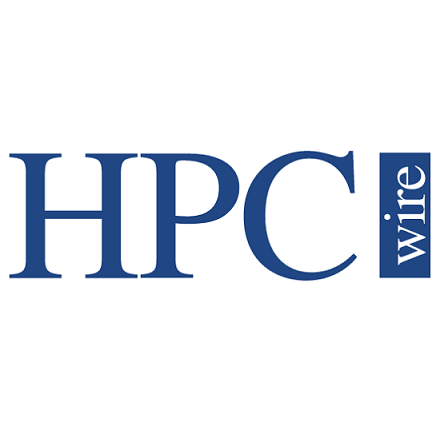
Supercomputing Challenges and Predictions
February 27, 2013
Everybody loves predictions. Here's a few made by IEEE group members at SC12 in case you missed it. Read more…

How College Students Compete to Build the Fastest Supercomputers
February 14, 2013
If you have an office betting pool about which college students are likely to win the next cluster challenge, here are some things you should know. Read more…

Top 10 Hits and Misses for 2012
December 13, 2012
In the world of high performance computing, a lot of the important news this year revolved around heterogeneous computing, big data, and HPC interconnects. Two vendors that perhaps embodied those technologies more so than others were Cray and Intel, both of which figured prominently in some of the biggest HPC stories in 2012. Here are HPCwire's highlights and lowlights for the year. Read more…

Adaptive Revs Moab, Debuts Remote Virtualization Edition
November 27, 2012
At SC12, Adaptive announced its Moab HPC Suite 7.2 release, which includes several productivity enhancements and introduces support for Intel Xeon Phi coprocessors. The workload management vendor also launched two new products as part of its Moab HPC Suite: Application Portal Edition and Remote Visualization Edition. Read more…

Blue Waters Opts Out of TOP500
November 16, 2012
NCSA's Blue Waters system is one of the fastest supercomputers in the world, but it won't be appearing on the TOP500 list, nor will it be taking part in the HPC Challenge awards. HPCwire spoke with Project Director Bill Kramer to get the full story on this important decision. Read more…

Michio Kaku Sketches Technological Wonderland of the Future at SC12
November 16, 2012
Imagine a world where a computer chip costs just a penny. They could be embedded anywhere and everywhere. Celebrity physicist Michio Kaku talked about the implications of this and much more in his much-anticipated keynote address at Supercomputing 2012 (SC12) this week in Salt Lake City, where he discussed the huge role that high performance computing will play in the year 2100. Read more…

The Six Personalities of Supercomputing
November 16, 2012
In a part serious, part provocative style, here is a light-hearted look at the different personality stereotypes involved in high performance computing. This is by no means an exclusive list, but it does illustrate the range of people who contribute to the flavor of the world of supercomputing. Read more…

PLX Looks to Bring PCIe Fabric to Market
November 14, 2012
PLX Technology, a maker of PCIe switches and bridges, has been spreading the word about using PCIe as a general-purpose HPC interconnect. At SC12 this week, the company went a little further down that path, unveiling their upcoming Express Fabric technology. We asked Vijay Meduri, executive vice president of engineering at PLX to talk about the rationale of using PCIe as an interconnect fabric. Read more…

- Click Here for More Headlines

Whitepaper
Transforming Industrial and Automotive Manufacturing
In this era, expansion in digital infrastructure capacity is inevitable. Parallel to this, climate change consciousness is also rising, making sustainability a mandatory part of the organization’s functioning. As computing workloads such as AI and HPC continue to surge, so does the energy consumption, posing environmental woes. IT departments within organizations have a crucial role in combating this challenge. They can significantly drive sustainable practices by influencing newer technologies and process adoption that aid in mitigating the effects of climate change.
While buying more sustainable IT solutions is an option, partnering with IT solutions providers, such and Lenovo and Intel, who are committed to sustainability and aiding customers in executing sustainability strategies is likely to be more impactful.
Learn how Lenovo and Intel, through their partnership, are strongly positioned to address this need with their innovations driving energy efficiency and environmental stewardship.
Download Now
Sponsored by Lenovo
Whitepaper
How Direct Liquid Cooling Improves Data Center Energy Efficiency
Data centers are experiencing increasing power consumption, space constraints and cooling demands due to the unprecedented computing power required by today’s chips and servers. HVAC cooling systems consume approximately 40% of a data center’s electricity. These systems traditionally use air conditioning, air handling and fans to cool the data center facility and IT equipment, ultimately resulting in high energy consumption and high carbon emissions. Data centers are moving to direct liquid cooled (DLC) systems to improve cooling efficiency thus lowering their PUE, operating expenses (OPEX) and carbon footprint.
This paper describes how CoolIT Systems (CoolIT) meets the need for improved energy efficiency in data centers and includes case studies that show how CoolIT’s DLC solutions improve energy efficiency, increase rack density, lower OPEX, and enable sustainability programs. CoolIT is the global market and innovation leader in scalable DLC solutions for the world’s most demanding computing environments. CoolIT’s end-to-end solutions meet the rising demand in cooling and the rising demand for energy efficiency.
Download Now
Sponsored by CoolIT
Advanced Scale Career Development & Workforce Enhancement Center
Featured Advanced Scale Jobs:
HPCwire Resource Library
HPCwire Product Showcase
© 2024 HPCwire. All Rights Reserved. A Tabor Communications Publication
HPCwire is a registered trademark of Tabor Communications, Inc. Use of this site is governed by our Terms of Use and Privacy Policy.
Reproduction in whole or in part in any form or medium without express written permission of Tabor Communications, Inc. is prohibited.
























